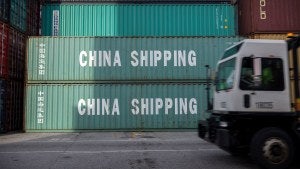American Rare Earths Find Comes up Short

The eventual extraction from Wyoming’s Halleck Creek site will be much smaller than the reported 2.34 billion tonnes.
In early 2024, reports began to emanate out of Wyoming of a stunning find of a rare-earth elements (REE). The deposit was reportedly so big it would reshape the REE landscape and make the United States the world’s leader in minerals of all kinds. The initial reports from Halleck Creek reported a find of 2.34 billion metric tonnes of REEs. To put that in perspective, total world reserves were estimated at 115 million tonnes in 2021 with China the single-largest holder of REE reserves at 44 million tonnes. Alas, the devil is in the details. And the technical report from American Rare Earths is full of the details.
of the world's estimated 115 million tonnes of rare earth element reserves in 2021 were held by China.
The report requires close reading but it makes clear that the eventual extraction of REEs will be much smaller than the reported 2.34 billion tonnes. When REEs are discovered, the in-situ deposits are estimated based on grades of parts per million (ppm). In this case, the Halleck Creek site is estimated to have an average grade of 3195 ppm. With some relatively simple math, the report makes clear that total rare earth oxides contained in the deposit are estimated to be 7.5 million tonnes. That is still a significant find, but certainly not enough to make the United States a leader in the REE market.
At the heart of the estimates of what can eventually be extracted at Halleck Creek is economic viability. If prices are too low, then only the highest-grade ores might make economic sense for extraction. But the technical report is quiet on how economic viability is defined.
China’s dominant position in the refining and processing of critical minerals and REEs gives it the ability to sway worldwide prices in both. Even as demand for many critical minerals and REEs has flagged due to lowered demand for electric vehicles, China has continued to increase output of both despite falling prices throughout 2023. Ensuring prices remain low both gives its domestic manufacturers a price advantage as well as making it economically unviable for competitors to enter or continue in the market.
We have already seen the repercussions. Lynas—the Australian critical minerals and REE mining company—is under pressure as revenue declined 58% in its most recent quarter. The opening of the only cobalt mine in the United States was scuttled just days before beginning operations due to low prices. To resume operations, cobalt needs to be roughly $20 per pound instead of the current $13.
With prices likely to remain low as China maintains output and new production comes online around the world, the lower-grade portions of the deposit will become economically unviable, further shrinking the overall find at Halleck Creek. This is not to say that the deposit is unimportant. The find will play an important role in securing a REE supply chain for the United States. But it will remain only one piece in a complex puzzle.


Related Content
 Climate and the Environment
Climate and the Environment
Robert Muggah joins the Eurasian Climate Brief to discuss the issues around the production and supply of rare earth minerals amid the Russia-Ukraine war.
 US Foreign Policy
US Foreign Policy
The public generally does not see current US trade policies toward China as benefiting Americans.
